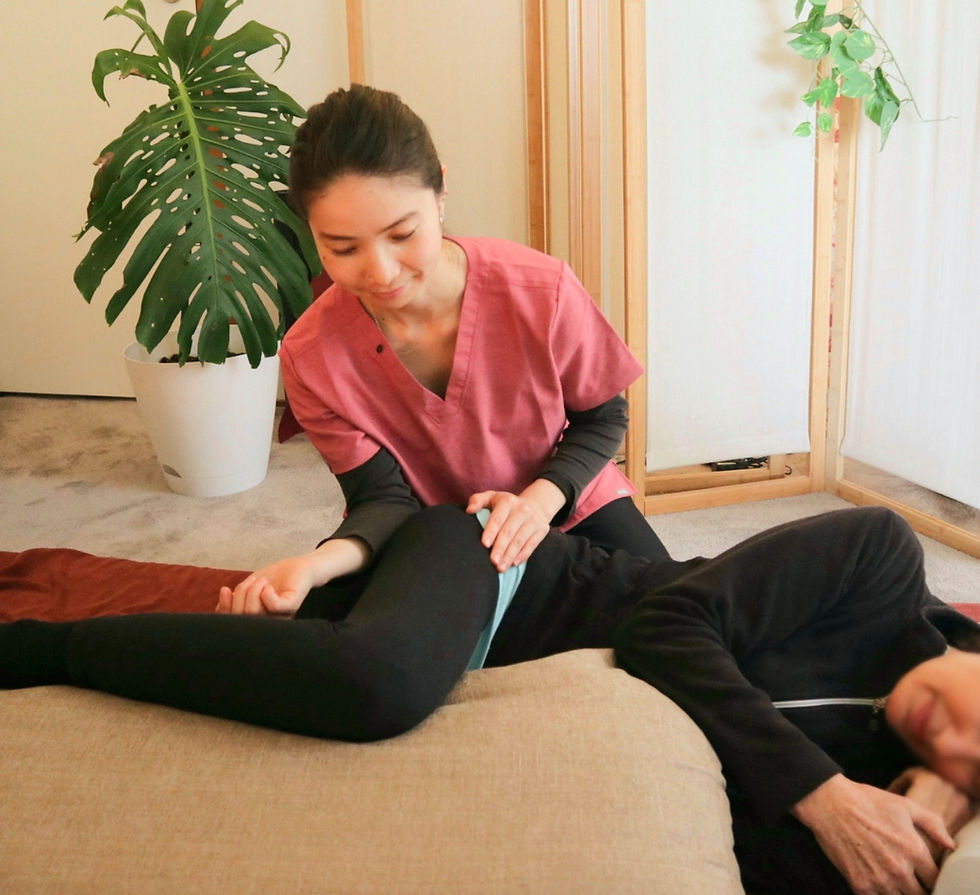Opening blood vessels supplying the uterus and ovaries
- akiko3220200427
- Aug 19
- 2 min read
Updated: Oct 22
① Stiffness of the muscles around the pelvis affects the uterus and ovaries
I provide abdominal therapy to improve the intestinal environment and increase the body's absorption of nutrients. However, while it is very important to eat nutritious foods, we also need to think about how those absorbed nutrients reach the ovaries and uterus.
Blood vessels are like thin hoses.
If these hoses are subject to constant pressure due to kinking or other factors, blood containing nutrients and oxygen can become stagnant, preventing sufficient nutrition from reaching the reproductive organs.

The uterine arteries, which deliver important nutrients to the uterus and ovaries, are located in the pelvic cavity, and blood flow is reduced when they are continuously compressed by tension and stiffness in the muscles around the hip joint.
The internal iliac artery, which nourishes the uterus and ovaries, branches off from the external iliac artery. Then, this blood vessel becomes the femoral artery, which extends down to the foot.
In other words, if coldness in the feet means that nutrient supply is declining, it may be that blood flow in the external iliac artery, which nourishes the uterus and ovaries upstream, is stagnant, which may mean poor blood flow in the pelvic cavity.
Poor blood flow in the pelvic cavity is thought to be likely caused by muscle stiffness.
When constant pressure is applied, the muscle's extensibility decreases, resulting in reduced blood flow within the pelvic cavity.
Small muscles, in particular, tend to be more susceptible to loss of extensibility due to their limited movement.
The largest muscle around the pelvis is the gluteus maximus, a muscle in the buttocks. If this muscle is stiff, movement and blood flow within the pelvic cavity are likely to be most reduced.
In Womb balance therapeutic treatment, in addition to pressing acupressure points and balancing the uterine sens (Thai meridians), we also focus on relieving muscle tension and improve the flow of blood that sends nutrients to the uterus and ovaries.
② Where do the ovaries get their oxygen and nutrients from?

The uterine arteries branch off from the internal iliac arteries, which are originally supplied with blood from the abdominal aorta above them.
The ovaries have two blood supply sources: the ovarian artery, which branches directly off from the abdominal aorta, and the ovarian branch of the uterine artery. This means that there is also a solid backup supply source.
This shows how much the ovaries require an abundant blood flow.
Removing abdominal stiffness = Promoting blood flow that sends nutrients to the uterus and ovaries
In Womb balance therapeutic treatment, approximately 30 minutes of the 120-minute sequence is dedicated to abdominal treatment.
In the first half, we align the uterine SENS (Thai meridian) that run through the entire body, opening the way for waste products to escape, and then enhance energy by pressing powerful acupressure points that revitalize the uterus.
We focus on the overall health of the body, as well as the uterus and ovaries, which work in conjunction with various other organs in the body.
If you're interested, feel free to make a booking for your therapy.
Recommended menu
Womb balance therapeutic treatment®






Comments